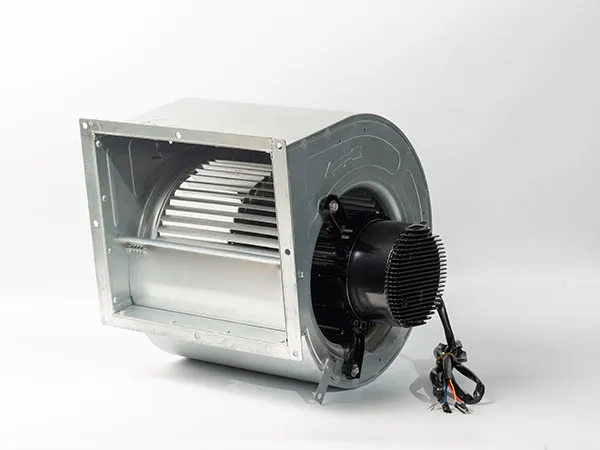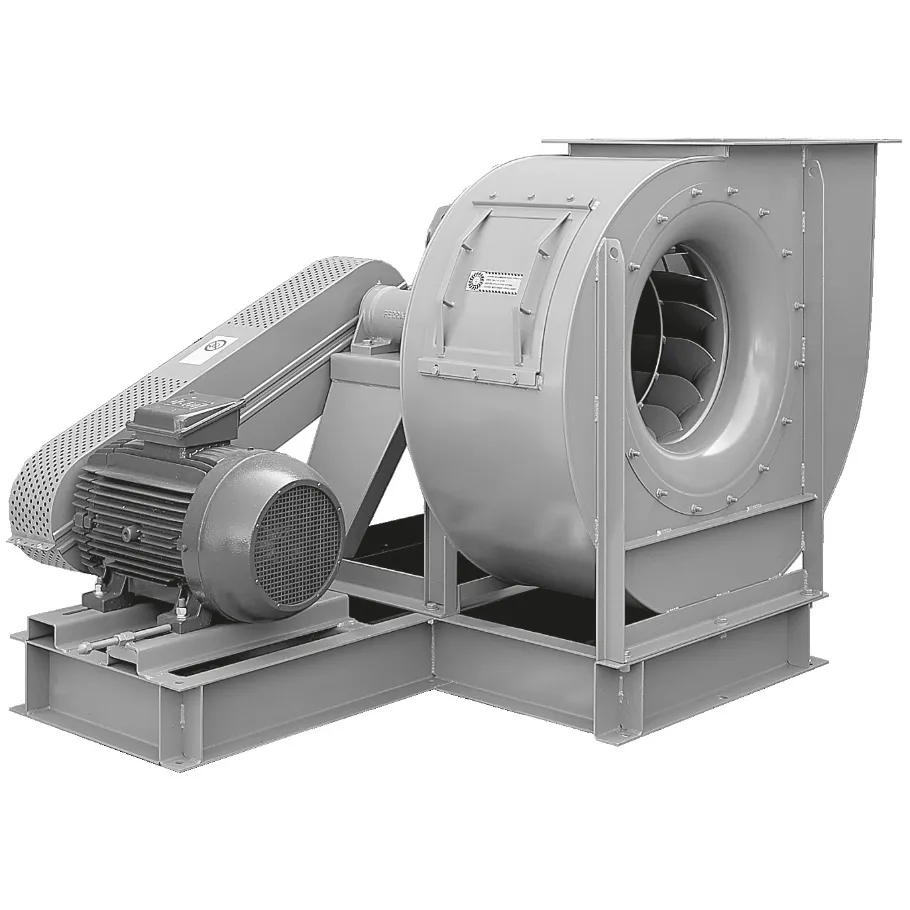
Have you noticed your ventilation system struggling to provide sufficient airflow or consuming excessive energy? Many ventilation issues trace back to selecting the wrong type of centrifugal fan. Choosing the incorrect fan can lead to reduced efficiency, increased costs, and system failures.
A forward curved centrifugal fan is a type of centrifugal fan featuring blades that curve in the direction of the wheel’s rotation. Known for delivering high airflow at relatively low pressure, these fans operate efficiently at slower speeds and are suitable for applications requiring consistent airflow.
If you’re unsure about selecting the right fan or understanding the advantages of different blade shapes, you’re in the right place. Keep reading as we discuss the details of forward and backward curved centrifugal fans.
Table of Contents
ToggleWhat is a Forward Curved Centrifugal Fan Used For?
Forward curved centrifugal fans have unique applications, especially in environments demanding high-volume airflow at lower static pressures. But what exactly are these applications, and why are forward curved fans suitable?
Forward curved centrifugal fans are mainly used for ventilation, air conditioning, heating systems, and various commercial appliances. They are especially suitable for scenarios requiring consistent airflow at low to moderate pressures, such as residential HVAC units, air handling units, and small industrial ventilation systems.
Typical Applications of Forward Curved Fans
| Industry | Application |
|---|---|
| HVAC | Residential heating and air conditioning |
| Food & Beverage | Commercial ovens, baking equipment |
| Electronics & Appliances | Air handling units, ventilation devices |
| Industrial | Small ventilation systems |
Forward curved fans perform well in applications that don’t require high pressure but need consistent, gentle airflow. However, they may struggle in more demanding environments with higher pressures.
Key Features of Forward Curved Centrifugal Fans
Forward curved blades offer high airflow capacity even at lower rotation speeds. This feature reduces noise and makes them suitable for quieter applications. However, one drawback is their reduced efficiency at higher pressures, limiting their use in high-pressure industrial systems.
What is a Backward Curved Centrifugal Fan?

If forward curved fans perform best at low pressures, what about situations that demand higher pressure and efficiency?
Backward curved centrifugal fans have blades that curve opposite to the direction of the wheel’s rotation. These fans excel in high-pressure and high-efficiency scenarios. They consume less energy, operate effectively at higher static pressures, and perform consistently under varying loads.
Blade Design and Efficiency
Backward curved blades are designed for aerodynamic efficiency. The unique blade shape allows the fan to maintain stable airflow, even under fluctuating pressure conditions. This characteristic helps save energy costs in demanding environments and ensures a longer lifespan.
What is a Backward Curved Centrifugal Fan Used For?
Backward curved centrifugal fans often appear in industrial and commercial settings that require powerful and efficient airflow. So, in which specific environments do these fans perform best?
Backward curved centrifugal fans are widely used in industrial ventilation, heavy-duty air handling units, dust collection systems, and environments requiring energy-efficient performance at higher static pressures. They excel in situations demanding consistent and robust airflow, like large HVAC systems and manufacturing plants.
Specific Applications for Backward Curved Fans
| Industry | Application |
|---|---|
| HVAC & Industrial | Commercial air handling units, HVAC systems |
| Manufacturing | Dust extraction and pollution control systems |
| Power Generation | Cooling systems for generators |
| Agricultural | Ventilation systems for large-scale farms |
Backward curved centrifugal fans operate effectively at high static pressures and remain energy-efficient even when airflow requirements change significantly.
What is the Difference Between Forward Curved and Backward Curved Fans?
Understanding differences between forward and backward curved centrifugal fans helps in choosing the best fan type. But how exactly do these two designs differ?
Forward curved centrifugal fans produce higher airflow at lower static pressures, are quieter at low speeds, and perform optimally at consistent airflow demands. In contrast, backward curved fans excel at high static pressures, have higher efficiency, reduced noise at higher speeds, and better performance stability under varying load conditions.
Quick Comparison Chart
| Feature | Forward Curved Fans | Backward Curved Fans |
|---|---|---|
| Blade Direction | Same as wheel rotation | Opposite to wheel rotation |
| Efficiency | Lower at high pressures | Higher across various pressures |
| Pressure Handling | Low to moderate | Moderate to high |
| Noise Levels | Quiet at low speeds | Quiet at high speeds |
| Power Consumption | Higher energy use at high pressures | Energy-efficient at various loads |
What is the Advantage of the Backward Curved Centrifugal Fan Over the Forward Curved Centrifugal Fan?
Why might someone choose a backward curved fan instead of a forward curved fan, despite potential higher initial costs?
The primary advantages of backward curved centrifugal fans include higher energy efficiency, improved performance under changing airflow conditions, lower energy costs over time, better reliability, and longer operational lifespan compared to forward curved fans.
Long-term Cost Savings and Performance Reliability
Backward curved fans might have a higher initial investment, but they quickly offset that cost by saving energy and minimizing maintenance needs. Their durability and efficiency make them ideal for heavy-duty commercial and industrial applications, providing value over the long term.
How Do I Choose a Centrifugal Fan?
Selecting the correct centrifugal fan type significantly impacts your system’s performance and efficiency. But how do you know which type fits your specific application?
To choose a centrifugal fan, consider key factors like required airflow, static pressure, efficiency requirements, noise levels, operational conditions, available space, and budget constraints. Clearly defining your application helps determine whether a forward or backward curved fan meets your needs.
Factors to Consider When Choosing a Centrifugal Fan
- Airflow and Pressure Requirements: Determine the exact airflow (CFM) and static pressure your system needs.
- Energy Efficiency: Consider how energy-efficient the fan must be, based on expected usage.
- Noise Levels: Assess acceptable noise levels for your environment.
- Operational Environment: Identify temperature ranges, dust levels, moisture, and other environmental factors.
- Budget Constraints: Balance initial investment with operational costs over time.
Example Fan Selection Checklist
| Criteria | Importance | Forward Curved Fan | Backward Curved Fan |
|---|---|---|---|
| High Efficiency | High | ✖️ | ✔️ |
| High Static Pressure | High | ✖️ | ✔️ |
| Quiet Operation | Medium | ✔️ | ✔️ |
| Cost-Effectiveness | Medium | ✔️ | ✔️ |
| Space Availability | Medium | ✔️ | ✔️ |
By clearly defining these requirements, you simplify the selection process and make informed decisions aligned with your long-term goals.
Conclusion
Choosing the right centrifugal fan, whether forward or backward curved, directly affects performance, efficiency, and cost savings. Clearly understanding your specific needs ensures that you select the ideal fan for optimal long-term performance.
